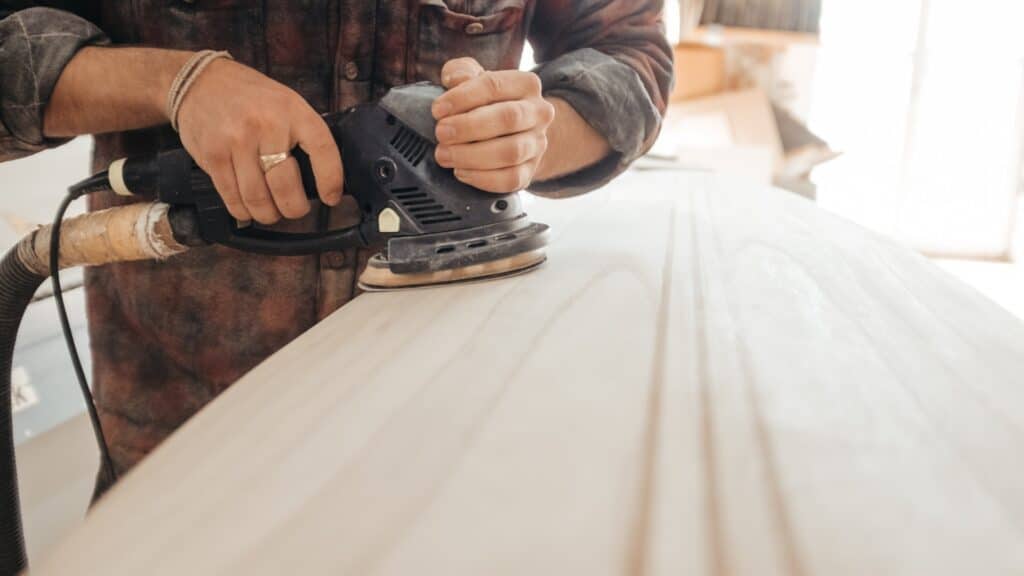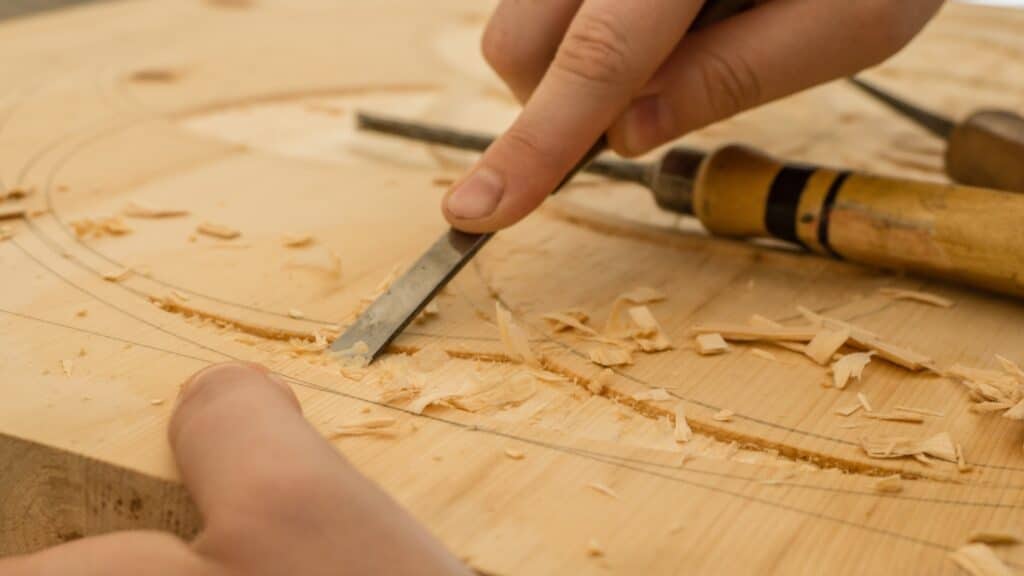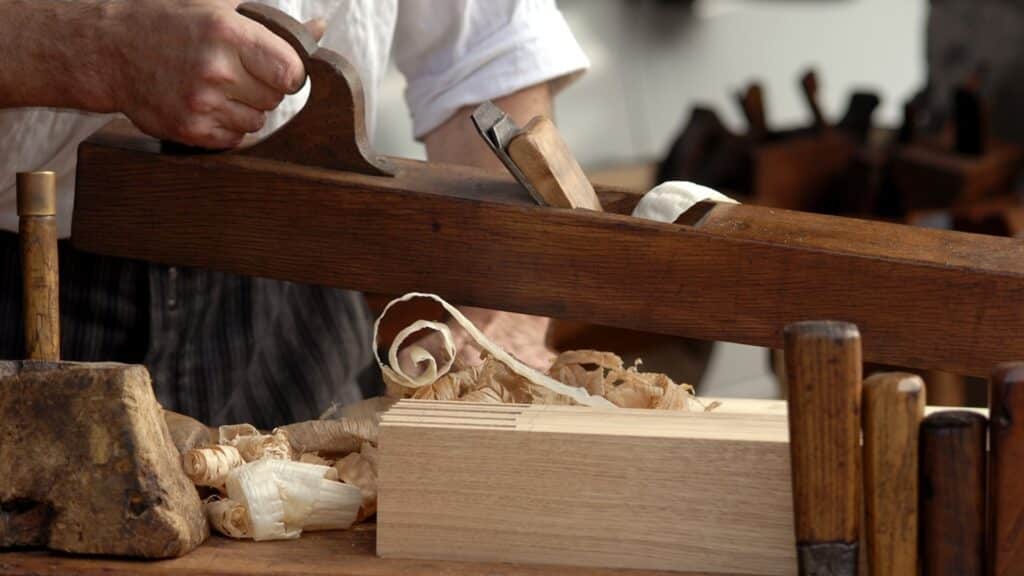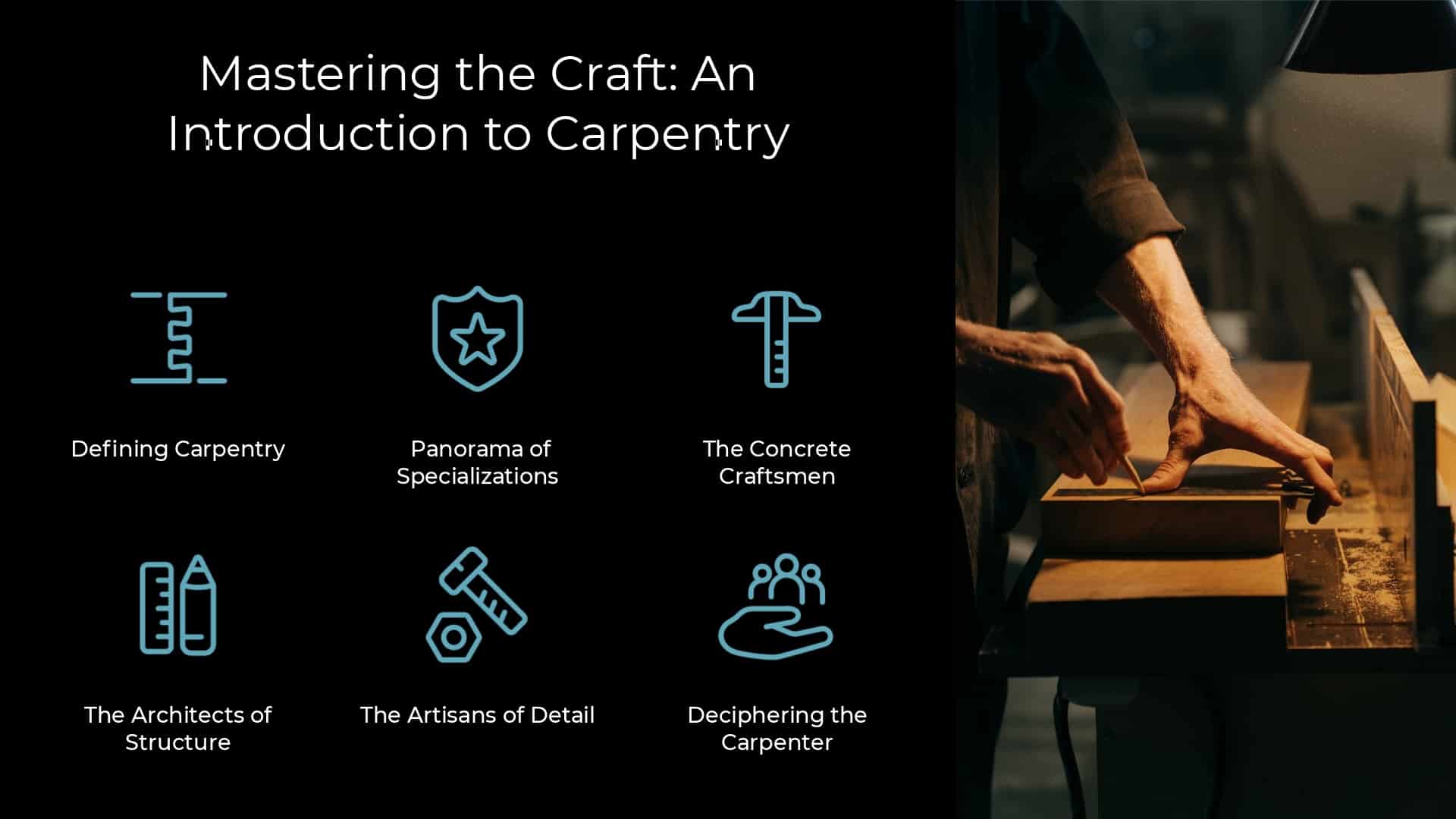Last Updated on June 4, 2023 by Pro Handyman Editorial Team
Carpentry, an ancient trade that resonates deeply with human civilization, still finds its core value in contemporary construction. This manual comprehensively introduces Carpentry, touching upon this enduring craft’s fundamental aspects and distinct types.
Defining Carpentry: A Craft Rooted in Construction
Carpentry essentially revolves around manipulating wood—cutting, shaping, and installing—to construct buildings and structures. Carpenters often find themselves at the heart of construction projects, contributing from the initiation phase by crafting critical wooden components for roofs, walls, and floors. Their role extends to the final stages, with tasks such as constructing window frames, doors, and skirting boards. So, if you possess a penchant for hands-on work, tool utilization, and a sense of satisfaction from a job well done, Carpentry might be your calling.
Sub-Disciplines of Carpentry: A Panorama of Specializations
Carpenters often hone their skills in a specific area of the craft, particularly when participating in large-scale construction projects. The following sections explore some key specializations within Carpentry.
Farmworkers: The Concrete Craftsmen
Also referred to as concrete carpenters, farmworkers bring unique skills. They construct formwork, essentially molds for concrete, which is the foundation for various structural components such as bridges, foundations, staircases, and beams. Made from metal or wood, the formwork can be temporary or permanent and plays a vital role in building.

Framers: The Architects of Structure
Framers lay the groundwork for structures, using wood or wood products to build the framework that defines the rest of the structure. From residential and commercial buildings to industrial facilities, framers measure, cut, and assemble wood, often contributing to the earliest stages of a construction project.
Cabinet Makers: The Artisans of Detail
Cabinet makers elevate Carpentry to an art, specializing in creating, repairing, and installing wooden cabinets, furniture, and fixtures. They operate within various environments, including custom furniture manufacturing, construction companies, and cabinetmaking contractors, with many also venturing into self-employment.
Deciphering the Carpenter-Joiner Dichotomy
While closely related, joiners and carpenters diverge in their areas of expertise. Joiners, also known as finish carpenters, specialize in more intricate, aesthetically-focused tasks. They produce fine woodwork, doors, windows, and detailed furniture, primarily utilizing workshop stationary machinery. In contrast, carpenters often work on-site, executing larger fittings.
Carpentry Basics: Key Skills and Safety Measures
While richly rewarding, Carpentry also necessitates strict adherence to safety measures and mastery of many crucial skills.
Prioritizing Safety
Establish a well-organized workspace free of potential hazards. Safety equipment such as goggles, gloves, dust masks, earplugs, steel toe-cap boots, and hard hats may be necessary depending on the nature of your work and location.
Mastering Measurements
Accuracy is key in Carpentry. Always measure twice before cutting, and use a tape measure accurately. Precise measurements ensure the quality of your work and prevent the wastage of resources.
Handling Tools
Carpenters employ various tools, from simple pen and paper to high-power saws. Understanding the proper use of each device, and its storage, is crucial for both efficiency and safety.
Perfecting Cutting Techniques
Accurate measurements and tool mastery culminate in the art of cutting. Once you have accurately measured and selected the appropriate tool, ensure your cuts are straight and clean. This practice dramatically contributes to the overall quality of your work.
Embarking on a Carpentry Career: Pathways and Opportunities
Multiple avenues exist to enter Carpentry, with no formal qualifications necessarily required for specific roles. Here are some of the most common entry routes:

Gaining Work Experience
Work experience serves as a practical initiation into the construction industry. Whether it’s part-time work during school, holiday periods, or a full-time role such as a general construction operative or bricklayer, hands-on experience paves the way to a successful carpentry career.
Undertaking Courses
Several carpentry-specific courses offer a blend of theoretical and practical training. These courses provide the opportunity to gain in-depth knowledge and hands-on experience, preparing you for the professional world of Carpentry.
Embarking on Apprenticeships
Apprenticeships offer a proven pathway into Carpentry, allowing you to learn the craft while employed (and paid) by a construction company. In addition, it serves as an excellent launchpad for higher qualifications or other carpentry specializations.
Building a Career with Professional Qualifications
While not mandatory for all carpentry roles, professional qualifications can open doors to advanced functions and specialized craft areas. These include heritage and historical renovation, cabinet making, and more.
Woodworking Strategies for Beginners
Diving into the craft of woodworking might seem daunting for novices. But fear not because we’re here to provide you with some invaluable woodworking techniques and tips that will set you on the right path to becoming a seasoned woodworker.
The Half-Pencil Trick for Accurate Tracing
If you’re attempting to trace a precise copy of a particular object, such as the throat plate of your table or saw, a standard pencil can be your best friend. Simply grind your pencil on a belt sander until it becomes a half-pencil. The flat edge will guide your pencil straight along the edge of your template, ensuring precise tracing for your woodworking projects.
The Iron Pipe Clamp Cover for Protection
Iron pipe clamps are excellent tools, but they can easily mar softer wood or stain it due to a glue reaction. The solution? Cut a piece of plastic PVC pipe to size and slide it around the pipe. Then, if you have several short essays, you can space them strategically to accommodate different stock wood widths.
Quick Blade-Height Gauge for Efficient Working
A gauge block is your best bet to set the height of your table quickly saw blade. You can make one from a 3-inch length of 4×4 cut to your most frequently used settings. Then, if you need additional locations, create another block. This helps to reset the table saw blade quickly and efficiently.
Understanding Nominal Dimensions
You might be surprised that a 2×4 board is 1.5 inches x 3.5 inches. This is because the board is planning to eliminate irregularities. The original rough surface 2x4s were indeed 2 inches x 4 inches, but they were challenging to handle and stock. The old terms, such as 2×4 or 4×4, are still in use as “nominal” sizes because they are easier to say and follow tradition.

An Innovative Sanding Block for Sanding Curves
Sanding curves can be challenging. However, a small notepad can be your secret weapon. Just wrap sandpaper around the pad and bend it to the arc you need. Then, slip one end of the sandpaper between the pages to hold it in place on the pillow. This technique is convenient for projects with curves and difficult-to-reach spots.
The Simple Circle Layout Tool for Easy Circle Drawing
Drawing circles can be a breeze with this simple jig. Drill a 1/8-inch hole through every inch mark on a ruler or yardstick. To remove a circle, place a pin through the number “1” into the center of your board. Add 1 inch to the circle’s radius you wish to draw, and insert a pencil into this number. Rotate the pencil using the pin as a pivot to mark the circle.
The Cheap Stain Sprayer for Easy Staining
Staining chairs, lattices, or anything with numerous tight recesses can be daunting. So here’s an easier way: Pour the stain into a clean, empty spray bottle. Then, spray the color onto the project and wipe the excess with a brush or rag. The sprayer will squirt dye into all those hard-to-reach cracks and joints.
Conclusion
Carpentry is a diverse field with many specializations and career paths. Whether you’re interested in traditional Carpentry Repair Services or more specialized roles, this enduring craft has a wealth of opportunity. Embrace the journey of learning, practice, and mastery as you carve into the world of Carpentry.
